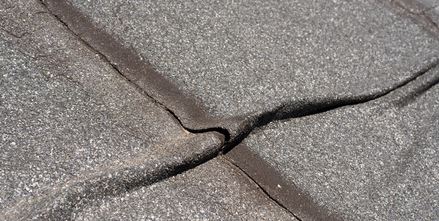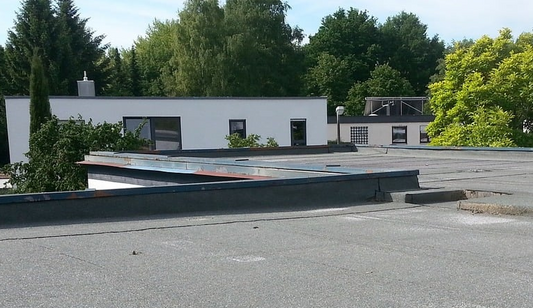You're about to fix roof trims to your GRP fibreglass roof, a vital step that guarantees waterproofing, durability, and a visually appealing finish.
Before starting, prepare the roof surface by cleaning it with a mild detergent, drying it thoroughly, and verifying its compatibility with the trim material.
Choose the right trim type, material, and application for your specific roof feature, considering factors like weather exposure, foot traffic, and maintenance access.
When fixing trims, use ring shank nails, apply PU adhesive, and follow manufacturer's guidelines.
Now that you've got the basics covered, get ready to master the art of fixing roof trims like a pro.
Key Points
- Ensure the GRP fibreglass roof surface is clean, dry, and free of old adhesive, oils, or waxes for a strong bond with the trim.
- Verify the trim material is specifically designed for GRP fibreglass roofs and compatible with the roof's surface.
- Use ring shank/clout/felt nails to fix trims to the deck, ensuring they are completely flat to the trim, and avoid using screws.
- Apply a small amount of PU adhesive in conjunction with nails for added security, especially on larger roofs.
Pre-Installation Requirements
Before starting to fix roof trims, verify that you have prepared the necessary tools and materials, and have a clear understanding of the manufacturer's instructions.
It's vital to guarantee you have all the required components, including the roof trim, adhesive, sealant, and cleaning solvents. Double-check that you've got the right type and quantity of each item to avoid delays or costly mistakes.
Make sure you've also got the necessary safety gear, such as gloves, safety glasses, and a respirator.
You'll need a clean and dry surface to work on, so clear the area of debris and guarantee the GRP fibreglass roof is free of oils or waxes. Remove any existing trims, and clean the surface with a recommended solvent. Allow the area to dry completely before proceeding.
It's imperative to follow the manufacturer's guidelines for surface preparation and trim installation to guarantee a successful and long-lasting fix. By taking the time to prepare properly, you'll set yourself up for success and avoid common pitfalls that can lead to costly reworks.
Trim Fixing Techniques
When fixing trims to the deck, use ring shank/clout/felt nails, verifying they're completely flat to the trim. Avoid using screws, as they can split the trim. For added security, you can use PU adhesive in conjunction with nails. However, apply a small amount to prevent excessive adhesive squeeze-out, considering expansion factors.
Bandaging is applied to certain trims for extra reinforcement. When fixing Flashing trim to the wall, use silicone adhesive. Remember, nails are the preferred method for fixing trims to the deck, as they provide a secure hold.
Trim Types and Applications
Frequently, GRP fibreglass roofs incorporate various trim types, each designed for specific applications and purposes.
You'll find that different trims serve distinct functions, such as weatherproofing, drainage, or aesthetics. For instance, drip trims are used to direct water runoff away from the roof's edge, preventing water ingress and damage. On the other hand, edge trims provide a clean finish and can be used to conceal the roof's edge detail.
When it comes to upstands, they're typically used around roof openings, such as skylights or vents, to create a watertight seal.
You'll also encounter capping trims, which cover the top of the GRP roof's edge, providing an additional layer of protection against the elements. Additionally, you might use corner trims to reinforce the roof's corners, guaranteeing a secure and durable joint.
Specialized Trims and Applications
As you move beyond standard trim types, you'll encounter specialized trims designed for unique applications that require extra functionality or precision.
For instance, you might need trims with built-in expansion joints to accommodate thermal movement on larger GRP fibreglass roofs. These expansion joints allow the trim to flex with the roof's natural contraction and expansion, guaranteeing a watertight seal.
Another example is trims with integrated drainage channels, which are perfect for areas prone to heavy rainfall or where water tends to accumulate. These channels direct water away from the roof's surface, reducing the risk of water ingress and associated damage.
You might also come across trims with reinforced materials or additional coatings for enhanced durability in harsh environments. These specialized trims can withstand extreme weather conditions, heavy foot traffic, or exposure to chemicals, making them ideal for industrial or commercial applications.
When working with GRP fibreglass roofs, selecting the right specialized trim for the job is crucial to secure a secure, long-lasting, and watertight installation.
Trim Cutting and Joining
Cutting and joining trims requires precision and care to maintain their structural integrity and guarantee a watertight seal.
When it comes to cutting trims, you'll need a good pair of snips, although a hacksaw or grinder can also be used with caution due to the risk of dust and the need for a mask.
To join trims, overlap them by 50-75mm and apply a small amount of PU adhesive, which is sufficient for a strong bond. You'll need to use manual persuasion to clip the trims together after applying the adhesive. It's crucial to verify a tight fit to prevent gaps and water ingress.
Remember, trims should be cut and joined carefully to maintain their structural integrity and prevent damage. Don't rush the process, as any mistakes can compromise the entire roof. Take your time, and make sure each joint is secure and watertight.
With the right tools and a little patience, you'll be able to achieve professional-looking results that will last for years to come.
GRP Roof Kits
Please note: Our GRP flat roof kits do not include roof trims. These must be purchased separately, and you can see the full range of trims for GRP roofing here.
Surface Preparation and Compatibility
Prepare the roof surface for a strong bond between the trim and the roof by verifying it's clean, dry, and free of old adhesive.
Any dirt, grime, or residue can weaken the bond, so take your time to get it right. Use a mild detergent and water to clean the surface, and then dry it thoroughly with a clean cloth.
If you're dealing with an old roof, you might need to use a solvent-based cleaner to remove stubborn old adhesive. Make sure to follow the manufacturer's instructions and take necessary safety precautions.
Once the surface is clean, inspect it for any cracks or damage. If you find any, you'll need to repair them before proceeding.
Also, check the roof's compatibility with the trim material. GRP fibreglass roofs can be finicky, so guarantee the trim you're using is specifically designed for this type of roof.
If you're unsure, consult the manufacturer's guidelines or seek advice from a professional. By preparing the surface and verifying compatibility, you'll be setting yourself up for a successful trim installation.
Fitting GRP Trims
With your roof surface clean and compatible with the trim material, you can now focus on fitting GRP trims that will provide a watertight seal and a sleek finish.
To guarantee a successful installation, follow these essential steps:
- Measure and mark the trim: Measure the length and width of the trim required, and mark the area where you'll apply the adhesive. Make sure to account for any obstructions or curves on the roof surface.
- Apply the adhesive: Use a high-quality adhesive specifically designed for GRP trims, and apply it to the marked area according to the manufacturer's instructions.
- Fit the trim: Carefully place the GRP trim onto the adhesive, guaranteeing it's aligned with the marked area. Use a level to guarantee the trim is straight and even.
- Secure the trim: Use mechanical fixings or additional adhesives to secure the trim in place, following the manufacturer's guidelines.
Types of GRP Trims
You'll find several types of GRP trims on the market, each designed to serve a specific purpose or cater to unique roofing needs. As you explore your options, you'll come across trims made from different materials, such as PVC, aluminium, and stainless steel. Each material has its own strengths and weaknesses, so selecting the right one for your GRP fibreglass roof is crucial.
Some GRP trims are designed for specific roof features, like drip trims for edges, corner trims for corners, and apex trims for the roof's highest points. You'll also find trims with different profiles, such as flat, curved, or angled, to fit various roof designs.
Additionally, some trims come with special coatings or finishes to enhance their durability or aesthetic appeal. For instance, some trims have a textured surface to improve grip, while others have a sleek, smooth finish to match your roof's colour scheme.
Installation Methods and Best Practices
Get your GRP trims securely in place by following established installation methods and best practices, which can make all the difference between a leaky, vulnerable roof and a robust, long-lasting one.
To guarantee a secure fix, you'll want to follow some key guidelines.
- Nailing it: Use nails that are completely flat to the trim, and opt for ring shank/clout/felt nails over screws, which can split the trim.
- Adhesive assistance: Use PU adhesive in conjunction with nails for added security, especially on larger roofs (over 50sqm) where expansion considerations come into play.
- Trim joining: Overlap trims by 50-75mm and apply a small amount of PU adhesive, using manual persuasion to clip them together.
- Cutting with care: Use a good pair of snips to cut trims, or a hacksaw or grinder with caution (due to dust and the need for a mask).
Trim Details and Applications
Every roof trim installation requires careful consideration of specific details and applications to guarantee a watertight seal and a visually appealing finish.
You need to think about the type of trim you're using, the material it's made of, and its intended purpose. For instance, if you're installing a drip trim, you'll want to verify it's positioned correctly to direct water away from the roof's edge. On the other hand, if you're using a soaker trim, you'll need to make sure it's securely fastened to the roof deck to prevent water ingress.
When it comes to applications, you'll want to ponder factors like exposure to weather, foot traffic, and maintenance access.
For example, if the roof trim will be exposed to high winds or heavy rainfall, you may need to use additional reinforcement or sealing compounds to verify a watertight seal. Similarly, if the trim will be subject to heavy foot traffic, you may need to specify a more durable material or design.
Additional Trims and Accessories
Beyond the standard drip and soaker trims, a range of additional trims and accessories can further enhance the functionality and appearance of your roof trim installation. These extras can help you achieve a more polished look, improve weatherproofing, and even add some extra features to your GRP fibreglass roof.
- Corner trims: These are used to create a neat, seamless joint where two sections of trim meet at a corner.
- End caps: These are used to finish off the ends of trims, providing a clean, watertight seal.
- Fixing clips: These are used to secure trims to the roof deck, ensuring a strong and reliable hold.
- Expansion joints: These allow for thermal movement between sections of trim, preventing cracks and damage.
Rounding Up
You've made it to the final stage of fixing roof trims to your GRP fibreglass flat roof.
By following the guidelines outlined in this article, you've confirmed a secure and professional-looking finish.
Remember to choose the right trim type and installation method for your specific project, and don't hesitate to get creative with specialized trims and accessories.
With the right techniques and materials, your GRP roof will be both functional and visually appealing.




